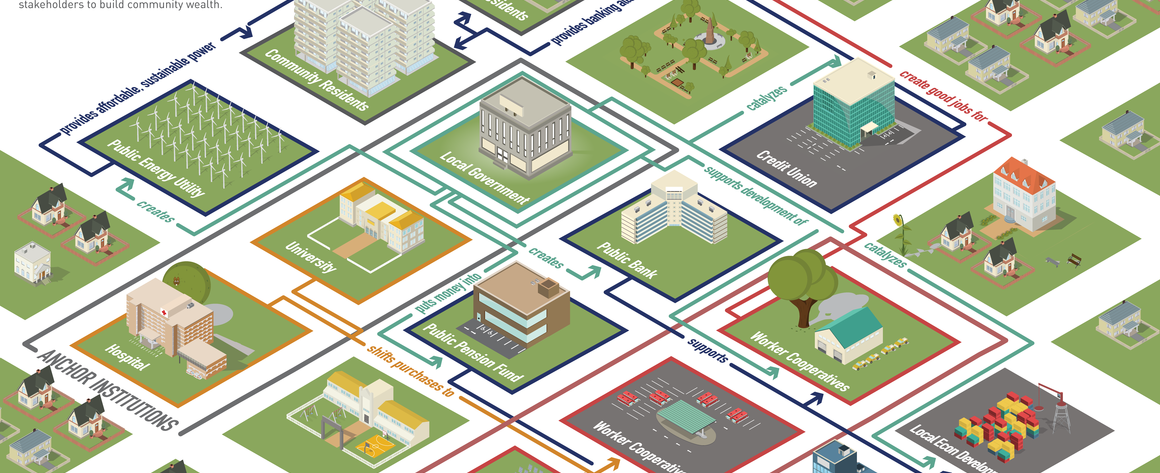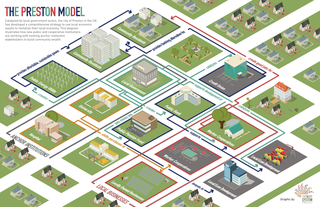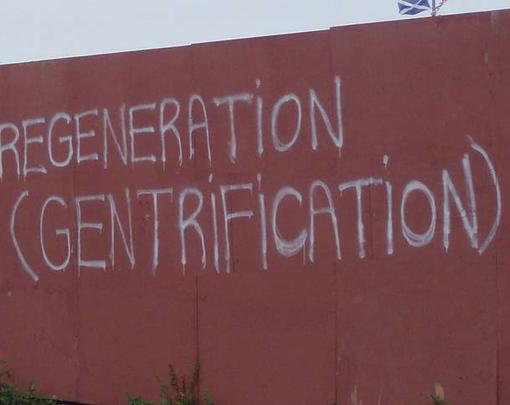The “Preston Model” is helping inspire a new conversation about the role of local government in catalyzing locally-driven economic revitalization and transforming patterns of ownership towards democratic alternatives. (We first featured a story about the Preston Model here in 2016.)
Today, the work in Preston to redefine how—and for whom—local economic development works is at the forefront of the agenda for local Labour councillors in the UK —and front and center at the upcoming “Alternative Models of Ownership” conference in London on 2/10, featuring, among many others, The Democracy Collaborative’s Ted Howard. Major coverage for the model has recently appeared in The Guardian in the inaugural story in Aditya Chakrabortty’s new series “The Alternatives” (and an associated podcast which explores the role that The Democracy Collaborative and the Evergreen Cooperatives played in inspiring Matthew Brown, the leading advocate behind the Preston Model.)
Because the Preston Model isn’t a simple one-element strategy, but a holistic framework for integrating community, cooperative, and public assets into a mutually supporting system of local economic prosperity, we thought it would be helpful to provide a visual representation of how the pieces of the model fit together to build community wealth:
Download: High resolution image | PDF
More coverage of the “Preston Model”:
- Jeremy Corbyn’s speech to Labour Councilors on local economic development strategies
- The Economist: “Preston, Jeremy Corbyn’s model town: How one city became an unlikely laboratory for Corbynomics”
- The Sunday Times: “Buy local, hire local: Preston blossoms on Corbynomics — The Lancashire city’s success in keeping wealth and jobs at home provides Labour’s blueprint for Brexit”
- The Daily Mirror: “How one city is beating Tory austerity with ‘radicalism on a shoestring’: By keeping money in the local economy determined officials have managed to turn the fortunes of Preston around, creating hundreds of jobs”
- Shadow Chancellor John McDonnell: “Labour will end the waste of potential across the UK and build an economy that works for everyone: We want other Labour councils to follow the example of Preston by working with local employers to redirect spending back into communities”
- The Guardian: “The Preston model: UK takes lessons in recovery from rust-belt Cleveland—As councils struggle with cuts, one Lancashire city adapted a pioneering grassroots approach from America to tackling inequality and keeping profits local”

This work is licensed under a Creative Commons Attribution-NonCommercial-ShareAlike 2.0 Generic License.




